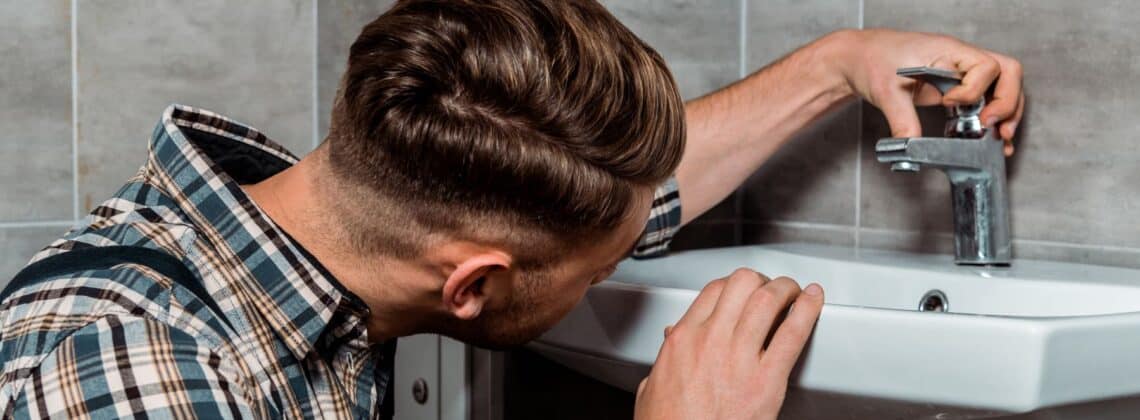
Install a new bathroom faucet with these easy tips and instructions.
Are you building a new home? Maybe you’re renovating an outdated bathroom. Or perhaps you simply need to replace an existing bathroom faucet.
This story will help you replace and install a new bathroom faucet. The good news: it’s not a difficult job. Most homeowners with some do-it-yourself (DIY) skills can install a bathroom faucet. We’ll walk you through the specific steps later in the story. You can also find some good YouTube videos that will show you the process.
But before we discuss the replacing a bathroom faucet, let’s take a moment to quickly review the different types of bathroom faucets that are available. Most faucet replacements involve selecting a size and style that will easily fit the space and design of your existing equipment.
Before You Install a New Bathroom Faucet: Identify Your Existing Faucet
What kind of faucet are you replacing? There are several types of common bathroom faucets. The simplest way to install a bathroom faucet is to replace the existing tap with a similar model. Several brand name faucets are readily available at stores, including Delta, Moen, Kohler, Grohe, American Standard, Kraus, Alamere, and more.
Here are the most common types of bathroom faucets.
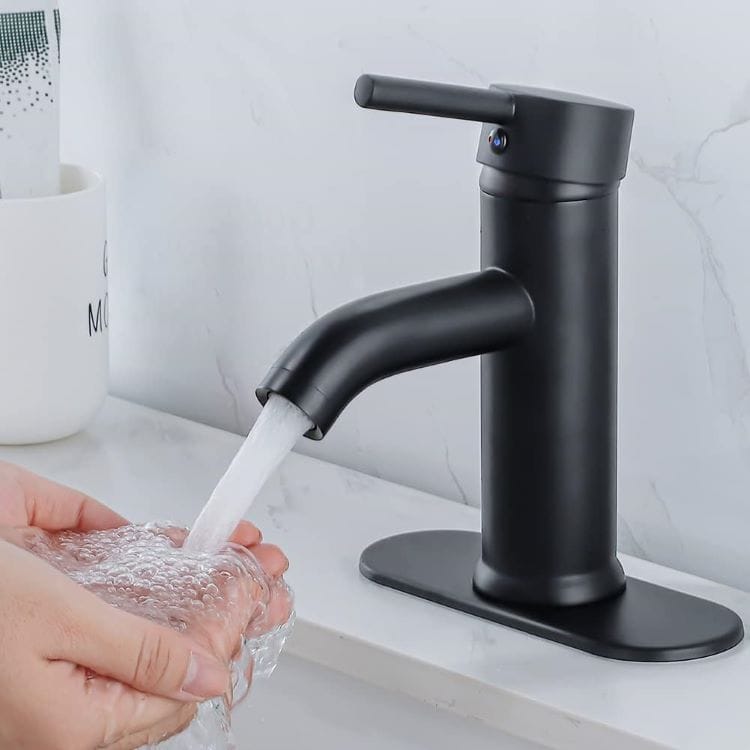
Single Lever Faucets
One of the most popular types of bathroom faucets has a single handle. Single lever faucets, also known as monobloc faucets or monobloc taps, have a single handle that controls both the temperature and water flow.
Key Features
- Easy to use and install.
- Sleek and modern design.
- Convenient for adjusting water temperature with one hand.
Double-Handle Taps
Double-handle taps have separate handles for hot and cold water. Two handles allow for the most precise temperature control.
Key Features
- Classic and traditional appearance.
- More control over water temperature.

Wall-Mounted Taps
Wall-mounted taps are attached to the wall above the basin or sink, creating a sleek and minimalist look. (This is not the most common modern bathroom faucet configuration.)
Key Features
- Easy to clean around the basin area.
- Ideal for small bathrooms with limited counter space.
Deck-Mounted Taps
Deck-mounted taps are installed on the countertop or deck of the basin, offering a wide range of design options.
Key Features
- Versatile in terms of design and placement.
- Easier to install compared to wall-mounted taps.
Waterfall Basin Taps
Waterfall basin taps have gained popularity in modern bathroom designs. These faucets offer a unique and elegant water flow that mimics the calming effect of a natural waterfall. These taps also provide a contemporary look while ensuring efficient water usage.
Key Features
- Create a visually stunning focal point in the bathroom with their cascading water flow.
- Modern and minimalist design.
- Similar to single lever taps, waterfall basin taps typically come with a single handle for easy control of both water temperature and flow.
- Available in a variety of finishes, including chrome, brushed nickel, matte black, etc. You can match waterfall basin taps to your bathroom’s overall design. They can be deck-mounted or wall-mounted, providing flexibility in terms of installation based on your preferences and bathroom layout.
While waterfall basin taps offer a luxurious appearance, it’s essential to consider your budget, as high-quality models may be priced at a premium.
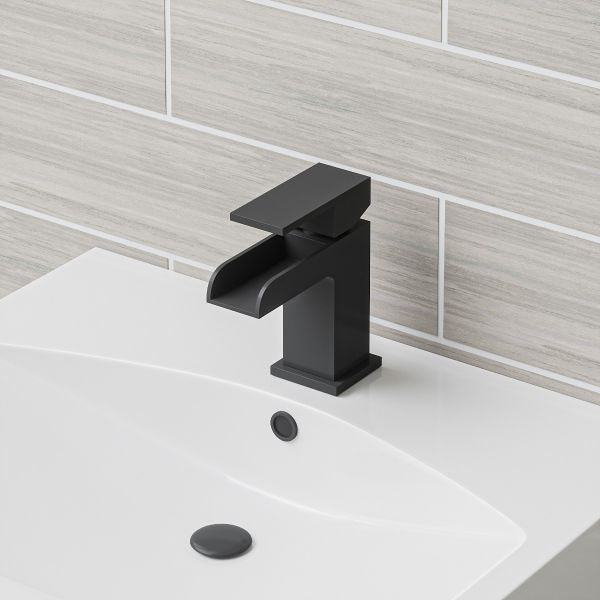
Other Factors in Choosing a Bathroom Faucet
There are three other factors to consider before buying and installing a new bathroom faucet.
Finishes and Materials
Consider the finish and material of your chosen tap to ensure durability and complement the overall aesthetic of your bathroom. Common finishes include chrome, brushed nickel, brass, and matte black. Materials can range from traditional brass to more modern options like stainless steel or even plastic.
Water Efficiency
In today’s environmentally conscious world, opting for water-efficient taps is a smart choice. Look for taps with a low flow rate or those that are labeled as WaterSense or equivalent certifications.
Maintenance
Consider the maintenance requirements of your chosen taps. Some finishes and materials may be more prone to water spots or corrosion, requiring regular cleaning.
How to Install a New Bathroom Faucet: Step-by-Step Instructions
As we discussed above, replacing a bathroom faucet is a manageable DIY project that can refresh the look of your bathroom. Whether you’re replacing old taps or upgrading to a new style, the process involves a few key steps. Let’s start with a list of the necessary tools.
Tools and Materials Needed:
- Adjustable Wrench
- Plumber’s Tape
- Bucket and Towels
- Basin Wrench
- Pipe Cutter (if necessary)
- Teflon Tape
- Plunger (for draining water if needed)
- Silicone Sealant
- New faucet (purchase from hardware store or home center store). You can also buy a new faucet kit from Amazon.com or other online stores.
Step-by-Step Instructions
Below is a comprehensive guide on how to fit install a new faucet in your bathroom. But before you get started, make sure to follow these tips:
- Measure and Plan: Before purchasing a new faucet, measure the existing holes and ensure the new taps fit correctly.
- Water Pressure: Check your water pressure and ensure that the new faucet and taps are suitable for the pressure in your plumbing system.
- Professional Help: If you are uncomfortable with any step or encounter complications, it’s always advisable to seek the help of a professional plumber.
Step 1. Turn Off Water Supply
Locate the shut-off valves under the sink or basin and turn them off. If there are no shut-off valves, you may need to turn off the main water supply to the house.
Step 2. Drain Water
Run the taps to drain any remaining water from the pipes. If you’re working on a basin, use a plunger (or a towel) to block the drain to prevent any small parts from falling into the drain.
Step 3. Disconnect Existing Faucet
Use an adjustable wrench to disconnect the water supply lines from the old taps. Have a bucket and towels handy to catch any remaining water.
Step 4. Remove the Old Taps
Use a basin wrench to loosen and remove the nuts securing the old faucet. Lift the lift the faucet and taps from the basin or sink.
Step 5. Prepare the New Faucet
Assemble the new faucet according to the manufacturer’s instructions. Apply the plumber’s tape to the threads if necessary.
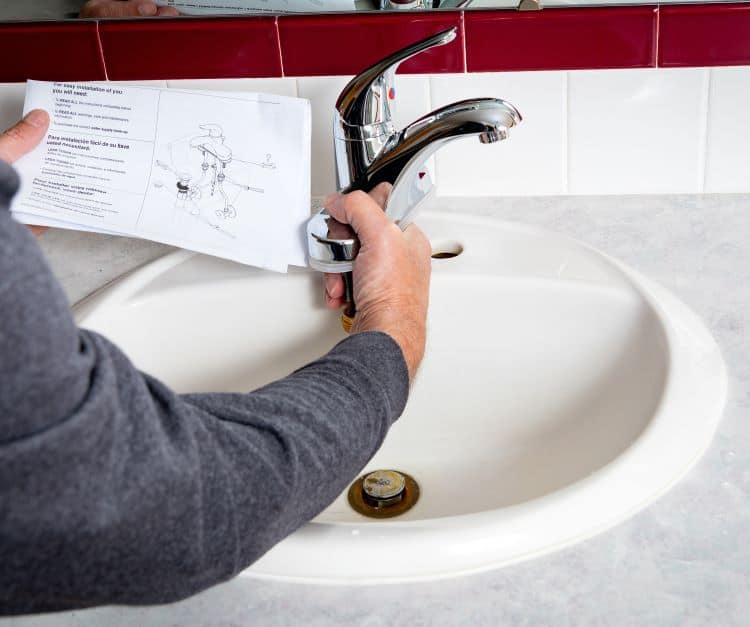
Step 6. Place the New Faucet
Insert the new faucet assembly into the holes on the basin or sink. Make sure the new equipment is properly aligned and centered.
Step 7. Secure the Faucet
From underneath, use a basin wrench to tighten the nuts onto the threaded studs of the new taps. Ensure they are snug but not overtightened.
Step 8. Connect the Water Supply Lines
Reconnect the water supply lines to the corresponding hot and cold taps. Use Teflon tape on the threads for a secure seal.
Step 9. Turn on the Water Supply
Gradually turn on the water supply valves to allow water to flow. Check for any leaks. Tighten the nuts as needed.
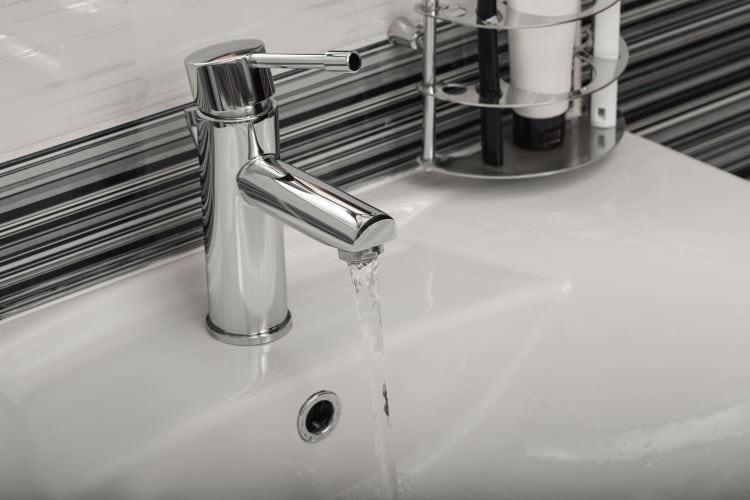
Step 10. Seal Around Taps
Apply silicone sealant around the base of the taps to create a watertight seal. This will prevent water from seeping underneath.
Step 11. Clean Up
Wipe away any excess sealant or water, and ensure the area is clean and dry.
By following these steps and taking the necessary precautions, you can successfully install new bathroom faucet and enhance the functionality and appearance of your bathroom fixtures.
Conclusion
Choosing the right bathroom faucet is a critical decision that impacts both functionality and aesthetics. Explore the various types of taps and faucets available, and consider factors like finishes, materials, water efficiency, and maintenance. In doing so, you can create a bathroom that is not only visually appealing but also practical and durable.



Leave a Reply